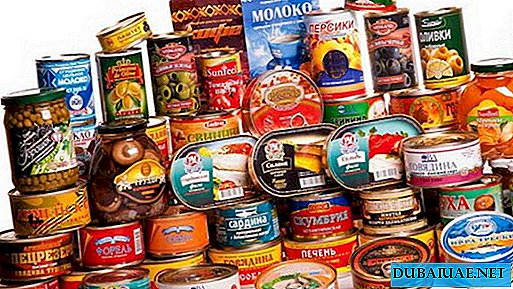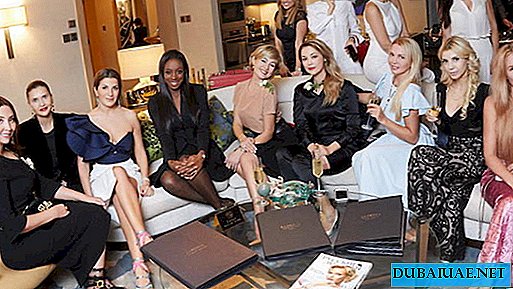IN THIS ISSUE, WE OFFER A LOOK INTO THE LONDON WITH OTHER EYES. For this, we have compiled our own travel guide for the unfamiliar and "unbreakable" places of the British capital.
Kyoto Garden
One of the most picturesque areas of London. Unlike the Italian city on the water, the London version is a triangular crossroads of canals, framed by expensive mansions and numerous floating restaurants and pubs. Pleasure boats, small boats and residential barges, painted in bright colors, are moored along the coast. These barges, on which not poor people live, as is commonly believed, but rather wealthy people, are very colorful: decorated with flowers or “dressed up” in Venetian gondolas. Someone attached bicycles to the board, and someone called his barge “School afloat” and equipped a real classroom with desks inside. There are practically no tourists here, and therefore Londoners come to this corner to enjoy peace and tranquility far from the crowds with cameras.
Dennis Sievers House
Undoubtedly the most unusual museum in London. 35 years ago, American decorator Dennis Sievers bought this dilapidated 17th-century house on Folgate Street and lived there until his death in 1999, renouncing all utilities - electricity, water and gas. His idea was to recreate the residential atmosphere of the Middle Ages, "penetrating the picture." Those who enter the house-museum, it seems that its inhabitants only went out for some time on business. Unfinished wine and bitten bread on the table, wrinkled sheets on the beds, burning fireplaces, hung linens ... Kitchen utensils of past centuries, candles, paintings, figurines, decorations and even smells and sounds fill every room of a five-story building. Real cats live here, who from time to time stroll between exhibits. The top floor of the museum is especially impressive, telling about the difficult period of the life of an impoverished family during the French Revolution. It is difficult for us, spoiled by household comfort residents of megacities, to imagine how people survived in such conditions. Guides ask visitors to believe in what is happening and get used to events, which is not at all difficult - the situation created is so true and natural.
Typical english pub
The pub tradition itself is a landmark and part of the UK culture that cannot be ignored. Many people call them the second house, which is why pubs look mostly like cozy friends' houses - with fireplaces, sofas and paintings. One of the most colorful is the Black Friar pub on Queen Victoria Street. The pub is located next to the Dominican Monastery, founded in 1279 and giving its name to the Blackfriars district. This is, perhaps, not only a historical pub, but also the only art nouveau style pub. The results exceeded all expectations - inside the pub is more like an extravagant church or museum. Every inch of space is generously decorated. At the same time, they did not stint on materials for decor either - they used colored marble, copper, smalt, bronze with royal generosity.
Notting hill
How many of us were not touched by the romantic story of the heroes Julia Roberts and Hugh Grant from the famous film of the same name, which glorified the charming quarter of London for the whole world? Exclusive Victorian houses, cafes, restaurants and vintage shops, where you can find rare copies of vinyl discs, books or antiques. Not to mention the gift shops with funny t-shirts, bags and watches. It is hard to believe that in the 50s of the last century Notting Hill was one continuous slum where numerous Caribbean emigrants found shelter. When the London authorities decided to put an end to the constant skirmishes of the warring factions, the quarter was cleared, and offenders were evicted. But the influence of Caribbean culture is still felt in some places where the houses are painted in sunny and marine colors. One of the main gems is the Portobello Road market.
London Beatles Store
While waiting in line at the Sherlock Holmes Museum, drop by this small but very entertaining store at 231 Baker Street. Here you will find T-shirts, toys, posters and all kinds of souvenirs about the Beatles. And those who have extra 12 thousand pounds in their pocket (more than 16 thousand dollars) can buy a 40-year-old record with original autographs of all four Beatles.
Museum of Trademarks, Packaging and Advertising
While in Notting Hill, visit this unusual and very interesting museum. Its founder and owner is a collector and historian by profession Robert Opier. At the age of 16, young Robert, having eaten a package of Munchies chocolates and putting aside his wrapper, laid the foundation for his huge collection, numbering today 12,000 exhibits from everyday life and spanning the period from the Victorian era to the present day. The exposition acquaints visitors with the evolution of the technique of selling consumer goods, as well as with changes in fashion for a particular brand. From shampoos to televisions, from sweets to posters - everything an ordinary consumer needs for everyday life.
Fulham Palace
Fulham Palace is the former suburban residence of London bishops who felt almost more important than kings and, accordingly, surrounded themselves with pompous luxury. The palace built in the 11th century contains a large collection of paintings, as well as artistic and archaeological objects from the history of the palace itself. In addition, bishops ’personal items, such as hats, books, and paintings, are exhibited for display. Around the palace there is a large botanical garden, famous for its vineyards and dahlias, various varieties of which are named after bishops. Along with lush flower beds, you can find various exotic plants brought from numerous English colonies.
Masonic secrets
Once in London, don’t be tempted to look into the massive gray building on Great Queen Street, on the facade of which flaunted compasses and a square - the main symbols of Masons. As they say, it will be interesting. This building is the official residence of the United Great Lodge of England. Inside, in addition to the meeting rooms, is the world's largest Masonic library and museum, which stores things that once belonged to Edward VII and Winston Churchill himself. Surprisingly, the entrance to this holy of holies of the English free masons is open to all comers, and not just to members of the box. On this occasion, Masons even like to mysteriously repeat: "We are not a secret society, we are a society with secrets."
Little Venice
One of the most picturesque areas of London. Unlike the Italian city on the water, the London version is a triangular crossroads of canals, framed by expensive mansions and numerous floating restaurants and pubs. Pleasure boats, small boats and residential barges, painted in bright colors, are moored along the coast. These barges, on which not poor people live, as is commonly believed, but rather wealthy people, are very colorful: decorated with flowers or “dressed up” in Venetian gondolas. Someone attached bicycles to the board, and someone called his barge “School afloat” and equipped a real classroom with desks inside. There are practically no tourists here, and therefore Londoners come to this corner to enjoy peace and tranquility far from the crowds with cameras.
Camden Town and Camden Market
Camden Town is the most eccentric and informal area of London. And its market is a bacchanalia of shopping for fans of the most unusual clothes, shoes and accessories in the punk style. Street guitarists, heel to ear carriers of banners advertising their own Tattoo & Piercing Studio, improvised DJs with portable discos and shops, stores, shops ... In addition, you can find unusual ethnic goods and second-hand goods in Camden Town things, antiques, books, CDs, records and more. Around the market and inside there are a myriad of shops and restaurants, pubs and cafes of various types and kitchens with quite affordable prices. By the way, souvenirs on the British-London theme are also better to buy here, since the prices on Camden Market are two times lower than in other places in London
Nightclub Bungalow 8
This club is considered one of the most fashionable nightlife in London. The "younger brother" of the famous Bungalow 8 in New York, the London branch, opened in 2007, is in no way inferior in style. It is a favorite afterparty venue for London Fashion Week. And in his soft designer chairs such guests as Kevin Spacey, Prince, Lindsay Lohan, Beyoncé and, of course, the indefatigable Kate Moss love to sit. Just do not enter the club. You must be either a member (that is, VIP), or a friend of one of them. So if you managed to get inside Bungalow 8, then you belong to the top of the London beau monde.
Restaurant Alain Ducasse
The most fashionable and most expensive restaurant in the city of Alain Ducassé is located inside the Dorchester Hotel in the Piccadilly area (the average cost of dinner is $ 200 per person). This French restaurant, marked with three Michelin stars, offers its visitors not only gourmet cuisine with a constantly updated menu and a collection of rare wines, but also impeccable service in the style of British butlers, as well as a unique atmosphere. For an additional fee of $ 300, you can order a private dinner at the table Lumiere, which is located in the very center of the hall, but is fenced off from the outside world by a kind of crystal curtain with lighting that creates the effect of a sparkling waterfall. An ideal place for a romantic meal for a special occasion.






